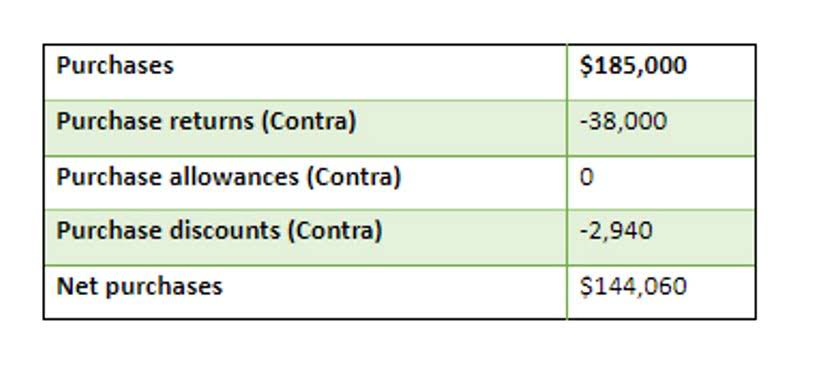
When you issue bonds at a discount, you receive less money Certified Public Accountant than the bond’s face value. Over time, the discount on bond payable balance is reclassified into bond interest expense. The issuer received less cash than the face amount of the bond, so the discount increases interest expense. Companies in the U.S. issued $1.3 trillion in bonds in 2023 alone, highlighting the importance of tracking these discounts properly. Businesses in every industry use contra revenue accounts to maintain financial accuracy.
- Reviewing these accounts periodically helps you track financial reductions and make informed decisions.
- This distinction is important for internal management and external stakeholders.
- In the realm of accounting, various techniques are used to ensure financial statements provide an accurate and comprehensive view of a company’s financial health.
- Contra asset account is an important element of the balance sheet or the books of accounts.
- The balance sheet would show the piece of equipment at its historical cost, then subtract the accumulated depreciation to reflect the accurate value of the asset.
- These opposing accounts are crucial for accurate financial reporting because they provide a more nuanced view of your assets’ true value.
What Exactly is a Contra Asset Account?
For the ultimate learning experience, consider a Full-Immersion Membership that offers unlimited access to an extensive collection of templates, courses, and tools. It’s the ideal platform for those looking to take their skills—and their business’s financial clarity—to the next level. Master accounting topics that pose a particular challenge to finance professionals.
- In the financial statements the asset account would be offset against the contra asset account to show the net balance.
- Revenue is an income statement account, but it flows through to the equity section of retained earnings as well.
- Nowadays, with the development of a computerized accounting system, it is easy and quick to prepare the contra asset accounts as the system does all the calculations, and hardly anything is pushed manually.
- In the financial statements the asset a/c would be offset against the contra asset a/c to show the net balance.
- Common types include accumulated depreciation (contra asset), allowance for doubtful accounts, and sales returns (contra revenue).
- Contra asset accounts are essential for providing a realistic valuation of a company’s assets.
Example of a contra account
This shows how much the fixed asset has depreciated while keeping your balance sheet accurate. You use contra revenue accounts to record sales returns, allowances, and discounts. If a customer returns a product due to defects or dissatisfaction, you record the refund in a contra revenue account instead of adjusting the original net sales figure. Sales Returns and Allowances is a contra-revenue account with a debit balance, directly reducing a company’s gross Sales Revenue. This account records the value of merchandise returned by customers or price reductions granted for defective goods.

Allowance for Doubtful Accounts
The discount gradually reduces the bond’s carrying value over its life, adjusting the effective interest expense. Similarly, contra asset accounts “filter out” the parts of an asset’s value that have been used up or might not be collectible, leaving you with a clearer picture of what’s actually useful. To reflect the reduction in the equipment’s value due to depreciation, the company also records $10,000 in the Accumulated Depreciation account. After one year, the Equipment account shows $40,000 ($50,000 – $10,000), and Accumulated Depreciation shows $10,000. In terms of revenue, a Sales Allowance contra account may be used to record reductions in sales due to discounts, returns, or other allowances, ensuring that net revenue figures exclude these deductions.
- A contra account is an essential concept in financial accounting that serves to offset the balance of another account.
- A healthy current ratio, generally between 1.50 and 3.00, suggests sufficient liquid assets to cover immediate liabilities.
- In accounting, contra refers to accounts or transactions that are opposite or contrary to another account.
- This account is paired with and offsets another asset account, so that a net balance is reported on the balance sheet.
- The balance sheet presentation of fixed assets, thus, includes their historical cost followed by the accumulated depreciation to arrive at the net book value.
- Similarly, allowance for receivables will pair with accounts receivable balances.
1. Purchase Discounts, Returns and Allowances Expense Contra
Another type of contra account is known as “contra revenue,” which is used to adjust gross revenue to calculate net revenue, i.e. the “final” revenue figure listed on the income statement. A Contra Asset Account is an asset account having a credit balance that is related to one of the assets with a debit balance. When we add the balances of two of these assets together, it reflects the net book value or carrying value of the debit balance assets. The main advantage of using a contra asset account is to separate this reduction from the asset account with which it is paired. By doing contra asset definition so, you can more clearly see the total amount of the related asset account, which would otherwise have been obscured by the offsetting amount of the reserve. Far less common is the obsolete inventory reserve, which reduces the overall inventory value on the balance sheet.
- The contra account accounting reduces the total number of outstanding shares.
- The allowance for doubtful accounts is used to reduce the net income by the estimated amount of uncollected receivables.
- Over time, the discount on bond payable balance is reclassified into bond interest expense.
- Whenever an organization buys an asset and depreciates it over the asset’s useful economic life, the reduction in value accumulates over the year, which is called accumulated depreciation.
Offsetting the asset account with its respective contra asset account shows the net balance of that asset. https://old.nezaare.ir/bookkeeping/what-is-payment-reconciliation-how-it-works-types/ The primary purpose is to provide a more accurate reflection of your financial health. By using contra assets, accountants can highlight potential issues, such as bad debts, that might otherwise be overlooked.

What is a Contra Account? Definition

The exact process can vary depending on the specific contra account and the accounting practices of the company. However, the fundamental principle is that the contra account is used to offset the related main account, providing a more nuanced view of the company’s financial position. Each of these contra accounts serves to provide more detailed information about the transaction history of the related main account. By tracking contra accounts, a company can make more informed decisions about asset management, liability settlement, and overall financial planning. Contra accounts are an essential component of the accounting process, designed to reflect the true value of assets, liabilities, equity, or revenue of a business. They provide a more nuanced picture of a company’s finances, allowing stakeholders to make informed decisions based on realistic, transparent financial information.

Allowance for Bad Debts
By creating Accumulated Depletion account, companies can reflect the reduction of the natural resource asset and the overall depletion costs in a more accurate way. By properly managing depletion accounting, companies in these industries can better track and allocate the costs and value of their natural resources. This also ensures accurate financial statements, which is essential for meeting regulatory requirements and maintaining the trust of stakeholders. Contra equity accounts, those intriguing components in the equity section of the balance sheet, reflect transactions that reduce the total equity available to shareholders. The most common one you might encounter is treasury stock—where companies buy back their own shares.

In addition, templates for contra account journal entries help ensure consistency and accuracy in recording transactions across the board. With the right tools and the wisdom of the community, managing contra accounts becomes a seamless part of your accounting routine. Property, Plant, and Equipment (PP&E) and Accumulated DepreciationAnother key example involves property and equipment. When a business owns assets like machinery, the value of these assets decreases over time. Contra asset accounts like Accumulated Depreciation account for this decrease.
